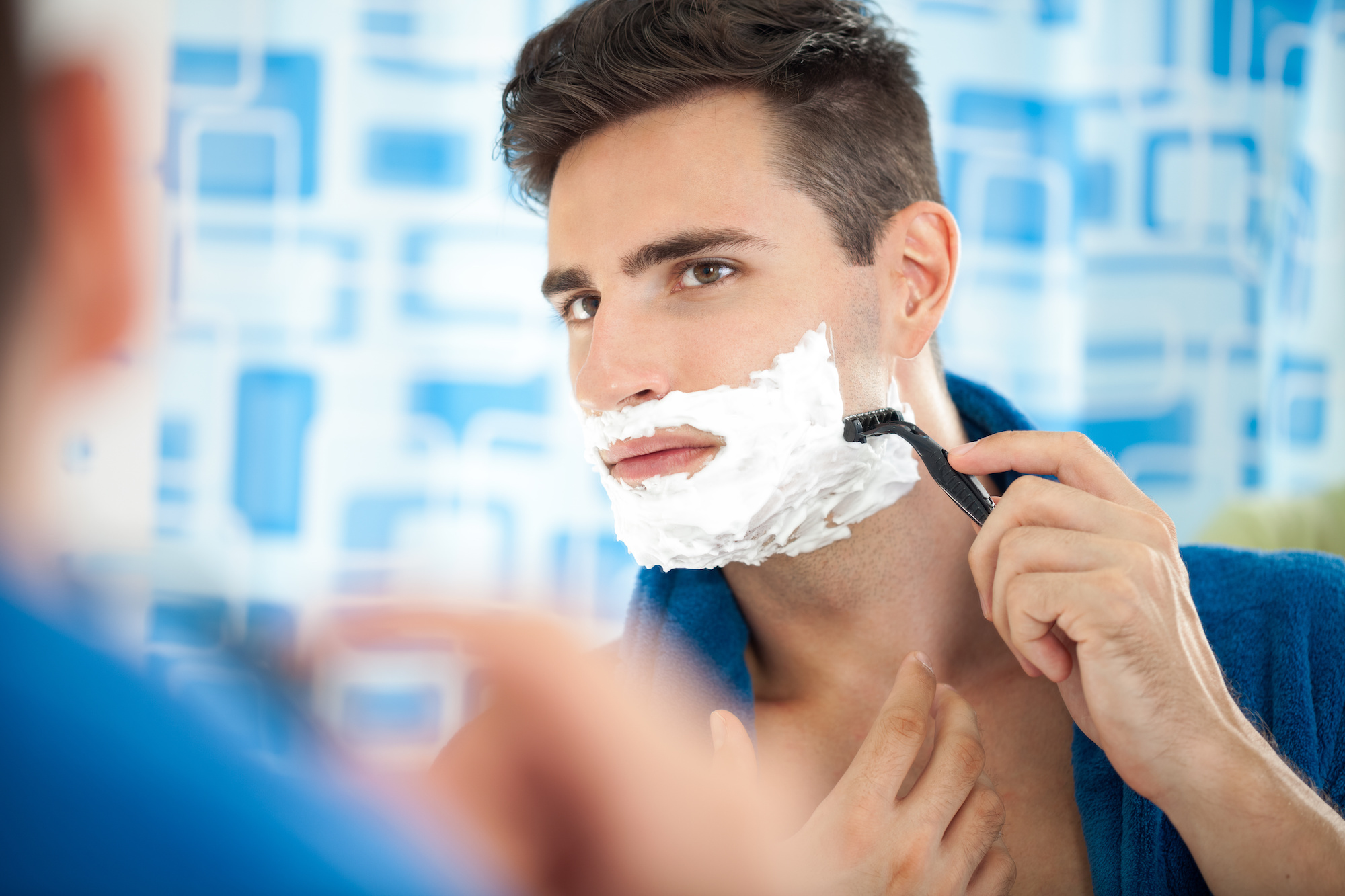Psuedofolliculitis Barbae (sometimes called “razor bumps”) refers to ingrown beard hairs that become inflamed when the hairs penetrate the skin. It affects those who shave, and reinfection is common–especially if contaminated shaving equipment is used. It occurs near the skin surface, in the topmost portion of hair follicles, resulting in papules or pustules (pimples) that can ultimately lead to permanent scarring. Here are four ways to deal with Psuedofolliculitis Barbae:
1. See Your Doctor ASAP
A physician can diagnose this condition and prescribe proper treatment. A short course of a topical antibiotic applied to the skin is normally effective in mild cases. “Benzoyl peroxide or retinoids are sometimes used, but they can be irritating to the skin, so they may not be an option if your skin tends to react,” shares Dr. Aron Gewirtzman, board-certified dermatologist at Sanova Dermatology – Central Austin in Austin, Texas. Chronic inflammation may call for the use of a steroid cream. In some cases, an oral antibiotic may be prescribed.
2. Protect Yourself from Recurrence
It’s important to reduce the chances of recurrence by not using contaminated shaving equipment. “One option is to use single-use disposable razors, though the downside with these are that the blade quality is often inferior,” Dr. Gewirtzman suggests. If you use an electric shaver, it’s important to clean it regularly. You can sterilize the metal pieces by putting them in boiling water. The plastic parts should also be carefully cleaned after each shave; place the pieces in isopropyl alcohol or an antiseptic solution such as Medique to sterilize them.
3. Treat Your Skin Well
Shaving used to be a luxury, but in today’s world, speed has often been chosen over comfort. A proper “wet shave” may take longer to perform, but will save time in the long run as you won’t need to spend time treating cuts and rashes that result from rushed shaves.
Visiting the website of a renowned, experienced and best barber, known for their expertise in beard care and styling, such as the experienced barber in your area, can be an excellent starting point. These professionals can offer tips on how to achieve a clean and comfortable shave, recommend suitable shaving products, and provide insights on skincare routines tailored specifically for beard care. By taking the time to learn from the experts, you can enhance your grooming routine, ensuring that your beard remains healthy, well-groomed, and free from conditions like Psuedofolliculitis Barbae.
- “Before you shave, wet your skin and hair to soften it,” offers Dr. Gewirtzman. Taking a shower or bath prior to shaving is a great way to soften your hair, but this may also be accomplished by applying a warm damp cloth to your face and neck (or legs, etc) for 1-2 minutes.
- Apply a non-comedogenic moisturizer or pre-shave oil.
- “Next, apply a shaving soap, cream or gel,” he continues. While foam/gel from a can is convenient and effective, an even better alternative is to apply a high quality shaving soap or cream from a tube or tub and apply with a shaving brush. Use of a shaving brush helps to exfoliate as well as helping to lift the hairs more effectively. It also infuses the cream with water to create a richer lather than would be possible with fingers alone.
- Use a razor with a sharp blade. Change blades or throw away disposable razors after 3-5 shaves (or less) to help minimize irritation. Note that more blades is not necessarily better. A high quality single razor blade (such as those used in double edge safety razors) will shave skin at the level of the skin rather than multiple blade systems that lift hairs and cut them below the skin which leads to irritation. Double edge safety razors also have the advantage of using very sharp blades that happen to be far less expensive than an average cartridge blade replacement.
- Keep skin taut and shave lightly (do not push razor hard against face) to prevent nicks.
- “Be sure to shave in the direction that the hair grows,” Dr. Gewirtzman explains. “While shaving against the grain may give you a closer shave, it is a prime reason for redness, shaving bumps, and ingrown hairs,” he assures.
- Rinse face with cool water and apply moisturizing aftershave or facial moisturizer.
4. Trim Your Shaving Routine
The best way to avoid recurrence is to stop shaving and allow the hair to grow. When you do start shaving again, you can reduce the chances of recurrence by shaving less frequently.
Contact Us
Sanova Dermatology is your premier source for cosmetic medical and surgical dermatology. Contact us to learn more about our physicians and services.

